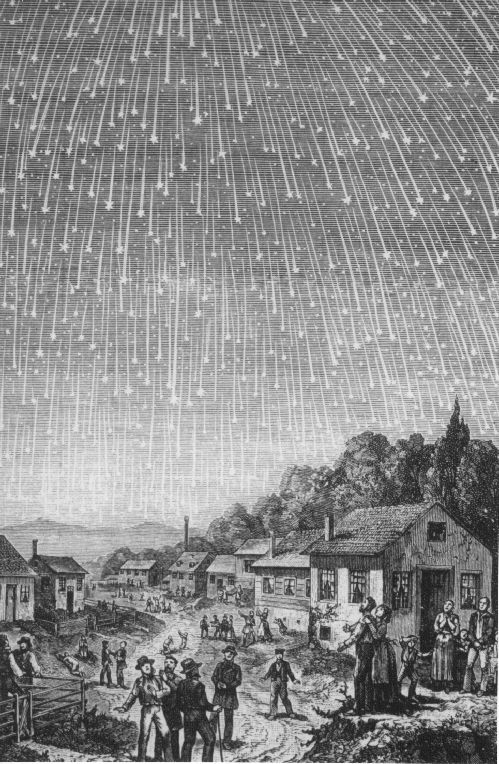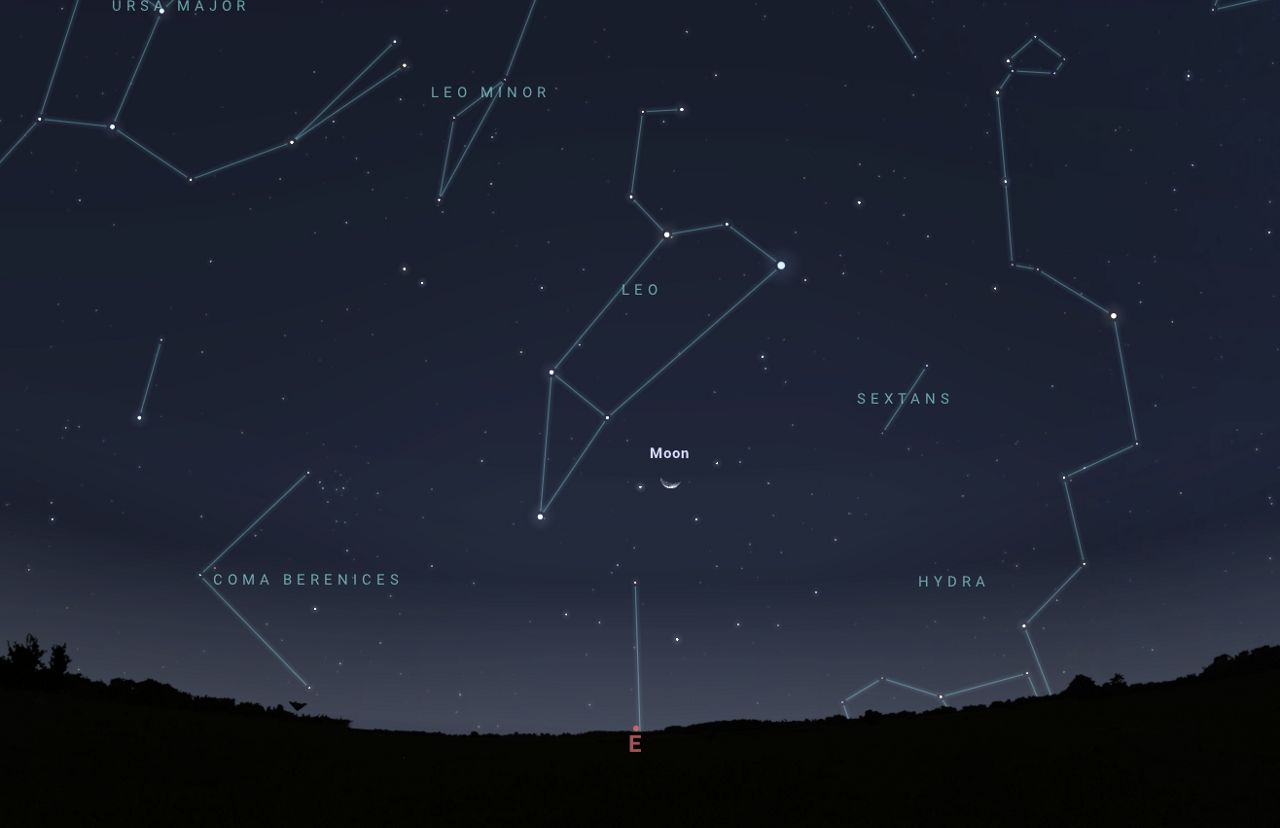Stargazers often consider the Leonid meteor shower as a sleepy one when it comes to other showers. However, it has an interesting history of bucking that perception.
Under ideal conditions–dark sky, no moonlight–viewers can see up to 15 meteors per hour. With light pollution and a waning crescent moon, though, plan on coming up short of that number.
The radiant, which is the point of the sky where the meteors appear to originate from, rises around midnight in the east-northeast. It’ll be highest in the eastern sky in the few hours before dawn. Meteors can appear anywhere in the sky, but your chances are better when the radiant is high. For this meteor shower, the radiant is in the constellation Leo.
Constellations in the eastern sky in the early morning of Nov. 18. (Stellarium Web)
Occasionally, the Leonids produce a meteor storm, when over 1,000 meteors per hour happen. For a 15-minute period during the 1966 Leonids, thousands of meteors per minute fell through the atmosphere, according to NASA. The last Leonid meteor storm was in 2002, with another in 1999.

Adolph Vollmy’s engraving of the 1833 Leonid meteor storm, first published in 1888. (Public domain)
The Leonids may produce a meteor storm about every 33 years. That’s the time it takes Comet Tempel-Tuttle to make an orbit around the sun, and it’s the debris from that comet that causes the annual Leonids each November.
According to Sky & Telescope, one meteor shower analyst believes an outburst of meteors–perhaps a couple hundred per hour–is possible on the morning of Nov. 18. However, skywatchers shouldn’t pin their hopes on that.
If you try your luck at seeing some shooting stars, check the forecast first. Of course, you don’t want clouds, but you also want to be dressed for spending some time outdoors. Lay back, let your eyes adjust to the darkness for at least 15 minutes and don’t look at your phone.
Even though the year is drawing to a close, we still have other celestial sights to choose from, including the more promising Geminid meteor shower.
Our team of meteorologists dives deep into the science of weather and breaks down timely weather data and information. To view more weather and climate stories, check out our weather blogs section.

